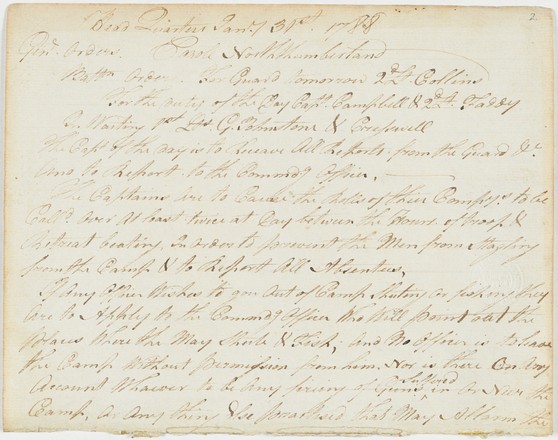
Orderly book of Captain James Campbell
30 January – 3 February 1788
Manuscript
Bequest of Sir William Dixson, 1952
DLMS 33
Manuscript
Bequest of Sir William Dixson, 1952
DLMS 33
If any officer wishes to go out of Camp Shooting or fishing they are to apply to the Commanding officer who will point out the places where [they] may shoot & fish; and no officer is to leave the camp without permissions from him … *
Especially in the early days of the colony, permission was essential for every activity, no matter how small. Orderly books such as this record the general and regimental orders that enabled the settlement to become established and kept it in some order during these critical first weeks and months.
This orderly book was kept by captain of the Marines James Campbell. Arriving with the First Fleet, he went on to supervise the establishment of the settlement at Rose Hill (Parramatta) and took a great interest in the local plants and animals, sending natural history specimens, including a kangaroo skin, back to his patron and Royal Navy captain, Lord Ducie. At the same time, he was relentlessly critical of Phillip's governorship. Believing that the settlement could not succeed, he quickly became one of the most disgruntled of the officers. He returned to England on the Gorgon, departing December 1791.


 Back to list
Back to list